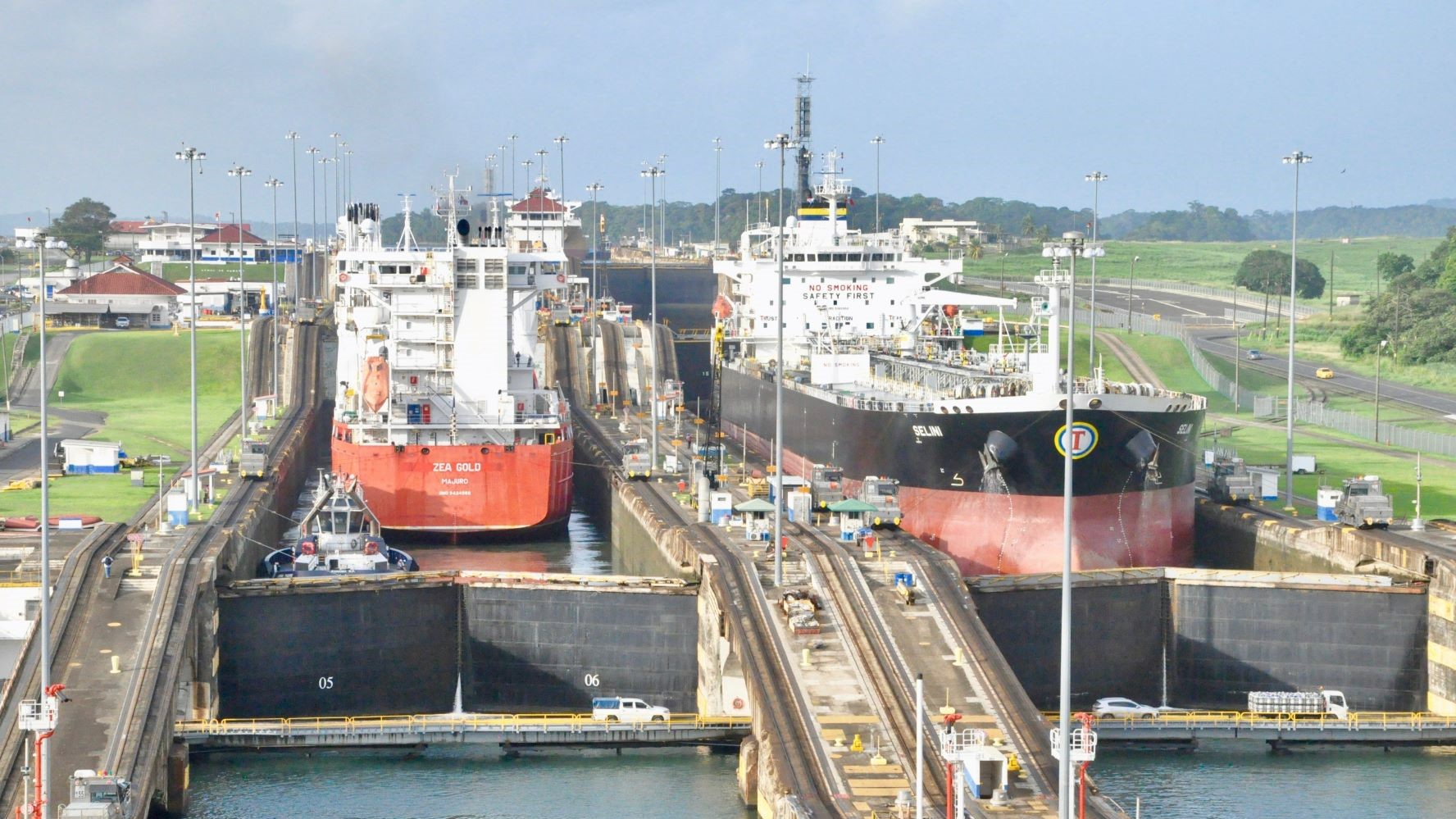Close Call in Panama Canal Locks Raises Safety Concerns
OOCL Utah‘s near-collision on Sunday with a Panama Canal lock gate suggests a tragic and costly accident is waiting to happen, say experts.
Video footage shows a fore-positioned ‘alpha’ tug almost crushed between the Hong Kong-flagged containership and the canal’s Agua Clara lock gate. There was no aft-situated ‘delta’ tug to stop the vessel.
Representatives of the Panama Canal Captains and Deck Officers Union told The Loadstar how a lack of procedures and under-resourcing by the Panama Canal Authority (ACP) left pilots – paid per vessel – calling the shots.
“They [pilots] want to finish fast, because the more assignments they get, the more money they make. The fault cannot be attributed to the ship.
“[The pilot] was told the [stern] tug was coming from another job… but chose not wait. There are no procedures and no regulation, so [the pilot] can do whatever he wants.
“This is the closest call we’ve had so far in a train of incidents over the past two years. In one, a tug was put aground… another put on the rocks and out for repair for three months.”
They claimed pilots often try to tackle the canal at speeds in excess of what is safe for tug crews. In the case of the alpha tug on Sunday: “We can say the crew was in jeopardy because of the enclosed space and the size of the ship,” they said.
“If the ship strikes the tug …it’s going to go under. There are no ladders, [the tugs themselves] are deathtraps… but if you fall in the water there, you’re going to get sucked under.”
If there had been a collision with the canal lock gate it could have put the waterway out of action for months, causing supply chain disruption approaching the scale of the Ever Given incident at Suez in March 2021. In the Panama Canal, the lock gates “…are not like the ones we had on the old locks. These move on rails, and if a gate gets out of that rail because a 100,000 tonne ship moving at 2.5 knots hit it, it’s going to get stuck. And we do not have the equipment to lift that gate right now.
“Actually, we do not know how they could fix that problem. So, it would be a big disruption for global supply chains.”
As well as a speed limit and a list of procedures for pilots that would specify tugs fore and aft, the union is pushing for better resourcing and better-equipped tugs, saying there are not enough crew to cover the needs of the canal. Crews work in excess of 16 hours a day, seven days a week, with no mandated rest periods, one source claimed.
“There is no maintenance of the tugs, there are few personnel… we are not immune to fatigue.”
The incident involving the OOCL Utah comes as the ACP is now implementing a new ‘disruption charge’ of up to $250,000 in the event of a serious incident.
The ACP has so far declined to respond to requests for comment.
Copyright : https://gcaptain.com
[/fusion_text][/fusion_builder_column][/fusion_builder_row][/fusion_builder_container]
OOCL Utah‘s near-collision on Sunday with a Panama Canal lock gate suggests a tragic and costly accident is waiting to happen, say experts.
Video footage shows a fore-positioned ‘alpha’ tug almost crushed between the Hong Kong-flagged containership and the canal’s Agua Clara lock gate. There was no aft-situated ‘delta’ tug to stop the vessel.
Representatives of the Panama Canal Captains and Deck Officers Union told The Loadstar how a lack of procedures and under-resourcing by the Panama Canal Authority (ACP) left pilots – paid per vessel – calling the shots.
“They [pilots] want to finish fast, because the more assignments they get, the more money they make. The fault cannot be attributed to the ship.
“[The pilot] was told the [stern] tug was coming from another job… but chose not wait. There are no procedures and no regulation, so [the pilot] can do whatever he wants.
“This is the closest call we’ve had so far in a train of incidents over the past two years. In one, a tug was put aground… another put on the rocks and out for repair for three months.”
They claimed pilots often try to tackle the canal at speeds in excess of what is safe for tug crews. In the case of the alpha tug on Sunday: “We can say the crew was in jeopardy because of the enclosed space and the size of the ship,” they said.
“If the ship strikes the tug …it’s going to go under. There are no ladders, [the tugs themselves] are deathtraps… but if you fall in the water there, you’re going to get sucked under.”
If there had been a collision with the canal lock gate it could have put the waterway out of action for months, causing supply chain disruption approaching the scale of the Ever Given incident at Suez in March 2021. In the Panama Canal, the lock gates “…are not like the ones we had on the old locks. These move on rails, and if a gate gets out of that rail because a 100,000 tonne ship moving at 2.5 knots hit it, it’s going to get stuck. And we do not have the equipment to lift that gate right now.
“Actually, we do not know how they could fix that problem. So, it would be a big disruption for global supply chains.”
As well as a speed limit and a list of procedures for pilots that would specify tugs fore and aft, the union is pushing for better resourcing and better-equipped tugs, saying there are not enough crew to cover the needs of the canal. Crews work in excess of 16 hours a day, seven days a week, with no mandated rest periods, one source claimed.
“There is no maintenance of the tugs, there are few personnel… we are not immune to fatigue.”
The incident involving the OOCL Utah comes as the ACP is now implementing a new ‘disruption charge’ of up to $250,000 in the event of a serious incident.
The ACP has so far declined to respond to requests for comment.
Copyright : https://gcaptain.com


